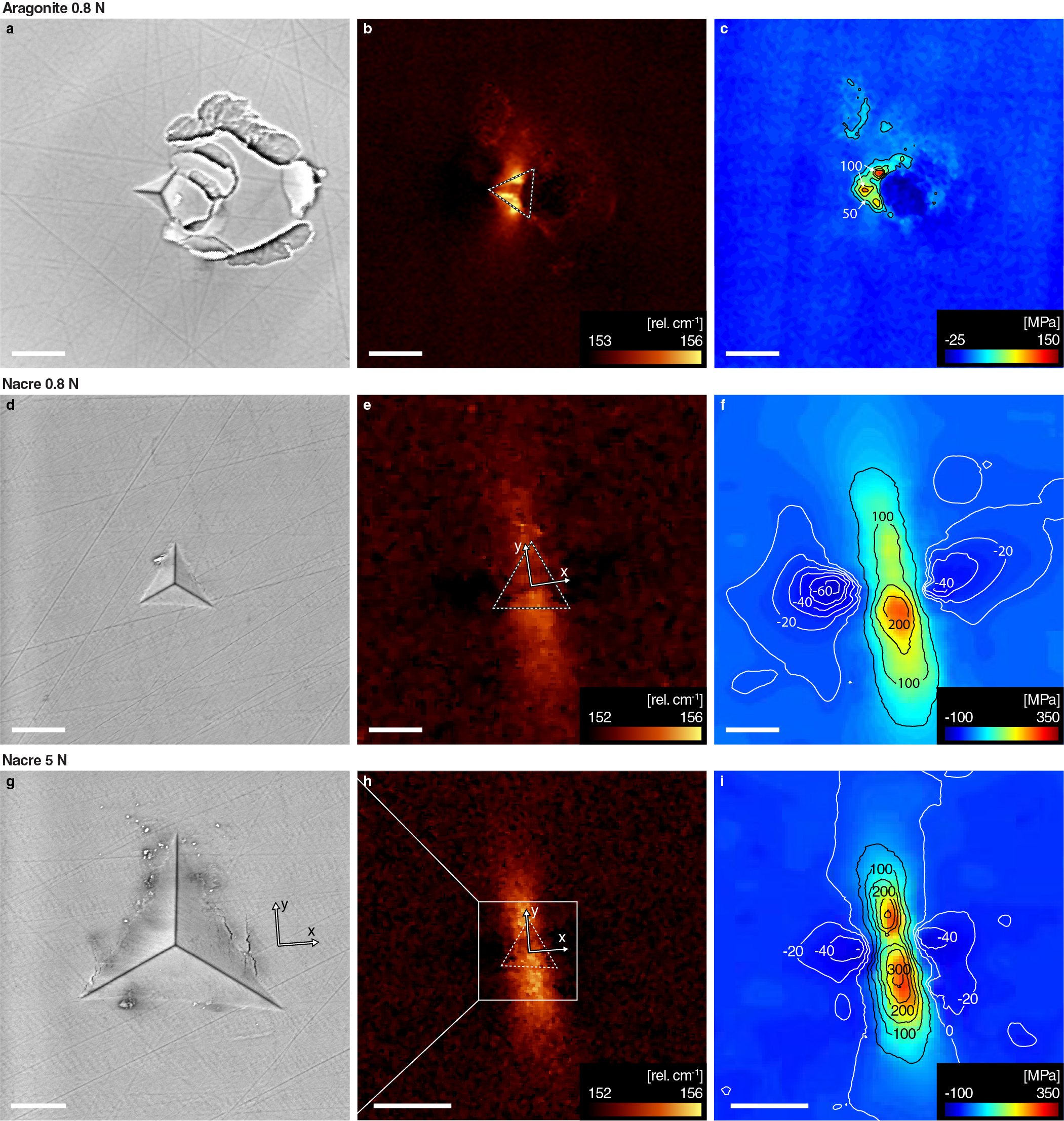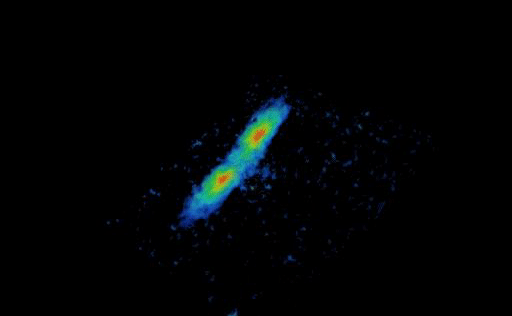Inspired by nature
Organisms have evolved over millennia. Throughout their evolution and adaptation, biological materials and structures often have been optimized to reduce material use while enhancing the functional and mechanical properties. Because of these advantages, engineers and architects have been inspired by nature.
But how do these materials exhibit such significant properties?
Hierarchical structures can have special properties that simple materials cannot have. For example, nacre (a.k.a. mother-of-pearl) has both high strength and toughness thanks to its hierarchical structures. I used multi-scale chemo-mechanical characterization tools to correlate the chemical and mechanical properties of nacre in nano-, micro-, and macro-scales.
Residual stress is mapped with Raman Spectroscopy
In the past two decades, the interest in translating nacre’s mechanical properties into biomimetic materials have been increasing exponentially. Indeed, nacre’s micro-architecture has been a source of inspiration for designing advanced functional materials with both high strength and toughness. These outstanding properties have been mostly attributed to the interplay between aragonite platelets and organic matrix in the typical brick-and-mortar structure. Nevertheless, in this manuscript we show that crystallographically co-oriented stacks of aragonite platelets (aragonite columns) with characteristic height of around 20 µm define another hierarchical level that contributes to the toughening of nacre. Our findings suggest that aragonite columns effectively store energy through cooperative plastic deformation.

Residual stress calculation using Piezo-Raman relationship
Each row displays SEM observation, Raman peak shift map, and stress analyses on the same region of (a-c) a micro-indented monolithic aragonite (maximum load 0.8 N), (d-f) nacre (0.8 N), and (g-i) nacre (10 N).
(a) SEM image of the indent; large cracks originate from the edges of the indent.
(b) A false-color heatmap of the L1 peak shift with the color corresponding to the peak position (152 – 154.5 rel cm-1); the indent position is marked with a dashed line.
(c) Contour and false-color heatmap of the residual stress computed with the piezo-Raman relationship.
(d, g) SEM images of the indents on nacre show minimal crack propagation. The aragonite platelet width direction (x-axis) and the growth direction (y-axis) are marked.
(e, h) Raman peak position maps illustrate that the peak shift is larger along the growth direction.
(f, i) The iso-stress contours and the heatmap show the anisotropic distribution of the residual stress along the growth direction.
The scale bars are 20 µm in (a-f) and 100 µm in (g-i).
A New Toughening Mechanism
The chemo-mechanical characterization work via piezo-Raman spectroscopy and the proposed toughening mechanism presented in this paper represent significant new information for scientists and engineers. Applications of the techniques introduced in this work will aid in the development of biomimetic strategies that could be useful in areas such as materials science, nanotechnology, coatings and biomaterials design, and biomedical applications. In a hierarchical material such as nacre, the existence of a larger length scale beyond the submicron brick-and-mortar structure offers an opportunity for a more efficient implementation of biomimetic strategies, such as in 3D printing.

3D Stress Map